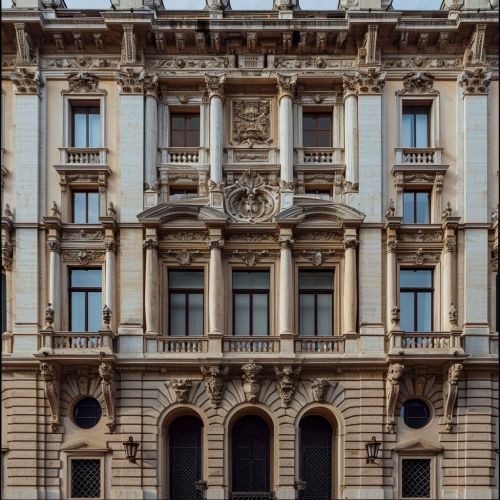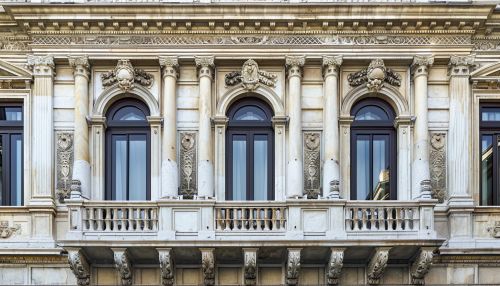Palazzo Spada
Architecture
The Palazzo Spada is a prominent example of Italian Renaissance architecture, characterized by its symmetrical facade, ornate detailing, and use of classical elements such as columns and arches. The palace was designed by architect Baldassare Peruzzi, who was known for his innovative approach to space and perspective.


The palace's most notable architectural feature is the Spada Gallery, a corridor designed by Francesco Borromini that uses forced perspective to appear longer than it actually is. The corridor is lined with columns that gradually decrease in size, creating the illusion of a longer distance. At the end of the corridor, a statue appears to be life-size, but is actually much smaller. This clever use of perspective is a testament to Borromini's skill and creativity as an architect.
History
Construction of the Palazzo Spada began in 1540, commissioned by Cardinal Girolamo Capodiferro. The palace was later purchased by Cardinal Bernardo Spada in 1632, who commissioned Borromini to design the gallery. The palace has since been passed down through the Spada family and is currently owned by the Italian State. It now houses the Council of State, one of Italy's highest judicial bodies.
Art Collection
The Palazzo Spada also houses an impressive collection of art, known as the Galleria Spada. The collection was started by Cardinal Capodiferro and expanded by Cardinal Spada. It includes works by prominent artists such as Guido Reni, Titian, and Caravaggio. The collection is particularly known for its Baroque paintings, reflecting the tastes of the cardinals who assembled it.
Location
The Palazzo Spada is located in the historic center of Rome, in the rione of Regola. It is situated near the Tiber River, and is within walking distance of other notable landmarks such as the Campo de' Fiori and the Piazza Farnese.
